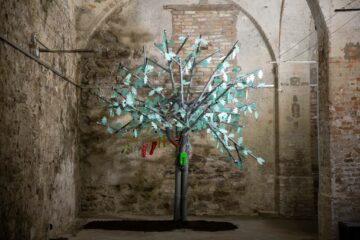The story began almost 4,000 years ago when a black-feathered pigeon flying across the Mediterranean from Thebes in Egypt landed on an oak branch in Dodona and spoke in human language, in a way that the locals could understand. He asked them to build an oracle around this tree and offer it to Zeus.
We do not know what may be true from the obscurity of legend, but the shrine was indeed built and the oratory continued to function until the 4th century. So much so that it was the second most popular oracle, next to Delphoi, in the era and geographical area where a prestigious institution of divination developed.
The process can be described as the formulation of a question by a pilgrim seeking an answer, which was then sent to the oracle by scratching it on lead sheets, which can be considered as input. The fortune-teller read the question and interpreted it in her own way, and then, at the appropriate time, listened for signs from the sky, which in Dodona meant mainly the whispering of the sacred oak leaves and the rustling of leaves, elsewhere something else.
We can be confident that the answer to this question was based on a wealth of experience and a thorough knowledge and analysis of the different, but certainly characteristic, sounds of the foliage, which, in the absence of any other possibility, the person who was waiting for the question also relied on. The divine answer was written down and delivered to him, the output equivalent of the process. Of course, the interpretation of the answer was left to the individual, but it is clear from this that it is unaccountable to the well-meaning, that is, the content of the formulator.
How could it be, since we know very well – four thousand years of experience is not enough – that there are at least two readings of reality and that they need not be similar.
During the exhibition, Attila Szabó’s work Sex Trap can be seen in the alley next to the Cellar Workshop of Lajos Vajda Studio in the alley installation Áttörés alley.
